Family and life in the community
Frederick was born in 1860 in Bishopsteignton, the son of John (gardener, village postmaster for 34 years and Parish Council founder member) and Eliza Pook (née Hore), one of eight children. They lived in Fore Street, known then as Post Office Street, on the high pavement opposite Cross House. At the time of writing you can still see the original pane of glass with a small handle where they would open for business at the old post office cottage. He trained as a carpenter before starting his own business as a builder and undertaker.
He married Caroline Mary Louisa Hill in May 1884 and they had two children, David John, born in 1885, and Louisa Eliza Alice, born in 1886. In 1887 he purchased and lived in Smith Hill House, now called Applegarth, at the bottom of Smith Hill, from his father in law. He also acquired the land adjoining West Street, where the hairdressing salon is today. On the 1910 Electoral Roll he is described as owning the ’freehold house, shop and garden’.
It was during this time that he built Pook’s Hill in Murley Crescent.
The family was actively involved with several village organisations. Frederick was a member of the Parish Council (founded by his father and others in 1894), member of the bowling club, Captain of the Village Fire Brigade and participated in many fund-raising events. He eventually became the village postmaster like his father before him.
The earliest record of the village fire fighting arrangements appears in the Minute Book of the Parish Council when on 21st July 1898 they agreed to grant the sum of £14 to defray the cost of fire appliances and that their control and management be placed under the Parish Council. The following October the appointed members of the Fire Brigade are listed as: F. W. Pook (Capt.), J. Wootton (Lieut.), R. Cole, S. Scagell, C. J. Hill, F. Cockram and Thomas Searle.
In December 1899 the Council paid Frederick the sum of £16.1.2d (approx. £1500 in 2024) for making a hose cart and a shed for housing it and other sundry items which he erected at the side of his post office now situated at Applegarth.
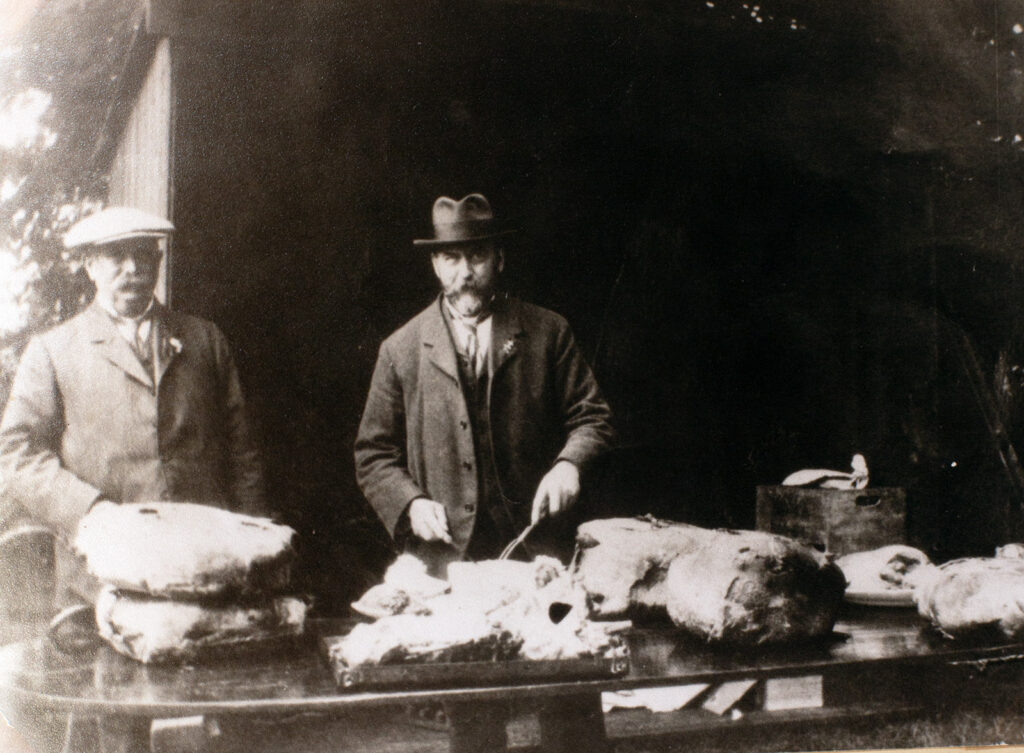
This shows Mr Staddon and Mr Frederick Pook preparing a meat meal for possibly the Coronation celebration. Photo dated 22.06.1911.
Frederick William Pook: timeline of building works in Bishopsteignton 1896-1924
| 1896 | Coombe, Teignmouth – drainage of farmhouses, with the Sanitary Inspector from Newton Abbot Rural Council. |
| 1899 | Hollowcombe, Higher Radway Estate – FW Pook involved in the opening of the new reservoir, on land owned by Captain J G Templar of ‘Lyndridge’. |
| 1904 | Luton Primary School – plans drawn up for the construction of the outdoor toilets, described as ‘offices’ on the plan. |
| c1904 | Blacksmith’s forge, Radway Street – plans drawn up for the blacksmith James Burley. Work was started but a dispute over the materials used meant that another builder completed the job! |
| c1910 | Pook’s Hill (19, AKA Wicon Croft, Wican Croft), Murley Crescent – construction of a house with access from Forder Lane. A drain cover bearing the name ‘FW Pook’ is located outside the back door. |
| 1913 | Bishopsteignton village – ‘supplying and fixing valves, hydrants etc.’ His tender was accepted by Newton Abbot Rural Council. A metalwork drain cover inscribed with the ‘Pook’ name can be seen in the pavement on Radway Hill, near the almshouses. |
| c1913 | Murley Crescent – completion of houses – Kennel Meadow (25), Mayfield (23), Marston (24), Barnwood (22), Ashburton House (20). |
| 1919 | Forder Lane – for the job of widening of Forder Lane, he was the preferred contractor appointed by Newton Abbot Rural Council. |
| 1919 – 1920 | Purchase of land and subsequent purchase by Frederick Pook at Government Surplus auction of army hut for construction of Village Hall, Fore Street. Opened by Lady Florence Cecil on behalf of The Church Institute 27th May 1920. |
| c1919 -1924 | Murley Crescent – completion of houses – Hartland (18), Silverdale (17), St Anthony (16), Daccombe (15). |
| 1923 | The old Bishopsteignton Primary School, now the Community Centre – conversion of a stable belonging to Cross House for an extra classroom. Initially descibed as “Unsuitable” by the County Architect it was eventually declared “A marvel to everyone”. |
| 1924 | Plans are approved by Newton Abbot Rural Council for extending ‘the sewer to new houses that are being built’. This may refer to the Murley Crescent houses. |
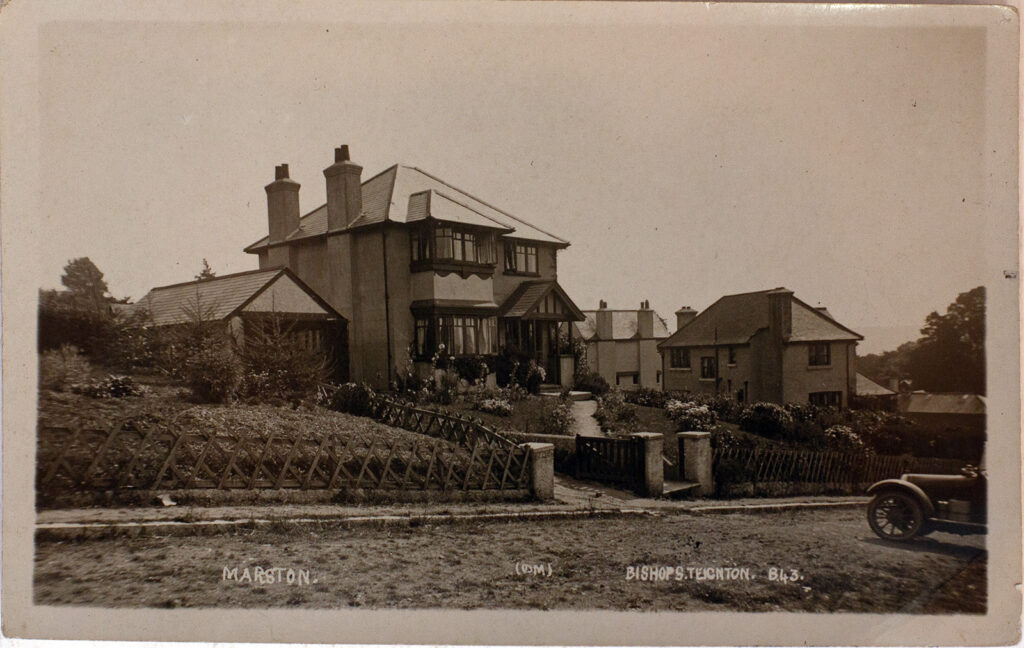
Postcard of Marston (previously The Haven), Murley Crescent, Bishopsteignton
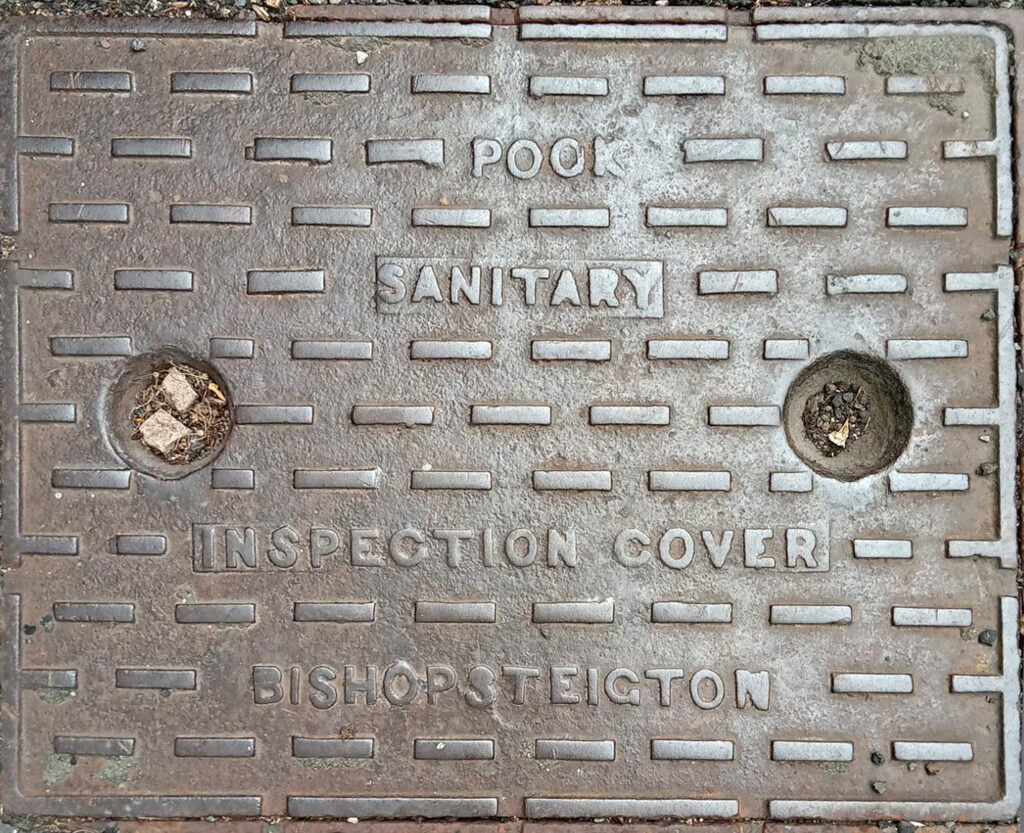
Inspection cover laid by Frederick Pook as part of his drainage works Radway Hill
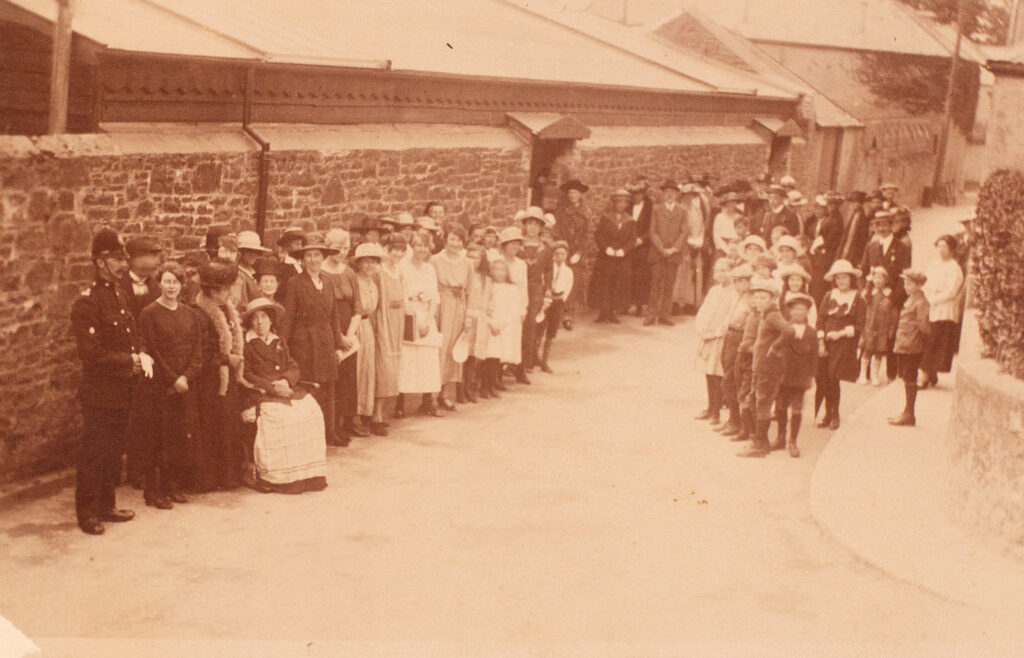
Opening of the Village Hall, Bishopsteignton 1920. Pook family to right of policeman PC Pester – Frederick, unknown, Caroline and Louisa.
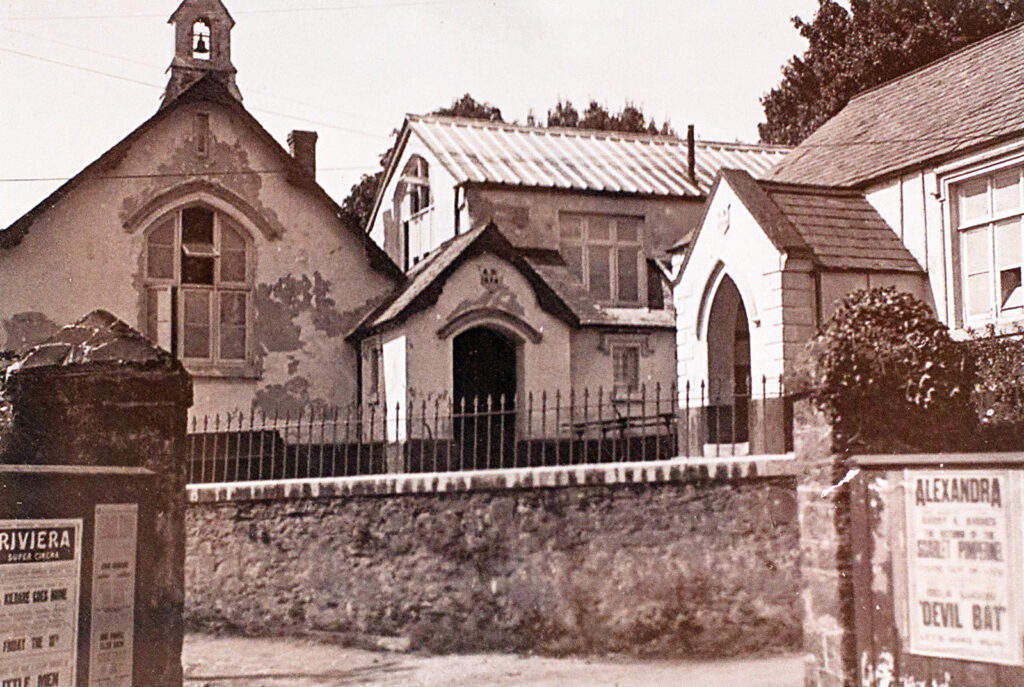
Bishopsteignton Primary School showing the stable conversion to classroom in centre of picture.
Tradesmen employed by Frederick Pook
Several village tradesmen were employed by the Pooks in the construction of the houses. Taken from the 1921 census, these included the following:
| Name | Lived at | Trade/job |
| Joseph Henry Blakeford | Verbena Cottage, Radway | Builder’s labourer |
| Sidney Joseph Boone | Clanage Street | House plumber |
| William George Moist | Cockhaven Street | Mason’s labourer |
| Moses Henry Taylor | Lower Radway | Mason |
| Henry Hubert Cann | Hollowmead | Apprentice carpenter |
| George Henley | Clanage Street | Carpenter |
| Thomas Henry Henley | Cockhaven Street | Mason – bricklayer |
| Edward Charles Hulland | Radway Hill | Mason’s labourer |
| Thomas Henry Jones | Teign View Terrace | Carpenter |
| Stanley Radford | Post Office Street | Painter and paperhanger |
Death and after events
Frederick died unexpectedly and in tragic circumstances in 1924 at the age of 64 years. The Pook’s Hill house was sold to Mrs Mary Dorothea Mason and the name was changed to Hope’s Roof. Mrs Isobel Mackinnon Addison bought Hope’s Roof in 1927 and renamed it Wican Croft. Her husband, 1st Viscount Christopher Addison, owned nearby Murley Grange and had a distinguished career as an anatomist and a politician in both Liberal and Labour governments. Notable achievements included being the first Minister of Health in 1919 and becoming Leader of the House of Lords in 1945.
After his father’s death, David John Pook and his family moved into Smith Hill House with his mother, Caroline. Although originally apprenticed as a builder and working with his father, David took on the role of village Postmaster, following in the family tradition. He had married Elizabeth Ann Smith, a schoolmistress, who taught the infant class at Bishopsteignton School for many years. They lived first in a house called Belle Vue, then at 3, River View Terrace with their three children. The family continued its positive contribution to many aspects of village life.
Louisa Eliza Alice Pook, David’s sister, died in 1927 aged 41 years. She is buried in the graveyard at the Parish Church of St John the Baptist, next to her parents.
In the 1939 register, just before World War Two broke out, David John Pook was both Village Postmaster and Special Constable.

The Western Morning News 25.04.1924 report of death F W Pook
Further research is continuing into the Pook family at Smith Hill House and the adjoining land where we believe his building yard was located. In the meantime, as you stroll around the village you may like to look out for the ‘Pook’ name on the drain cover on the pavement in Radway Hill, between the Almshouses and Wallis Grove. A walk around the Churchyard will also reveal the final resting place of members of the Pook family.
